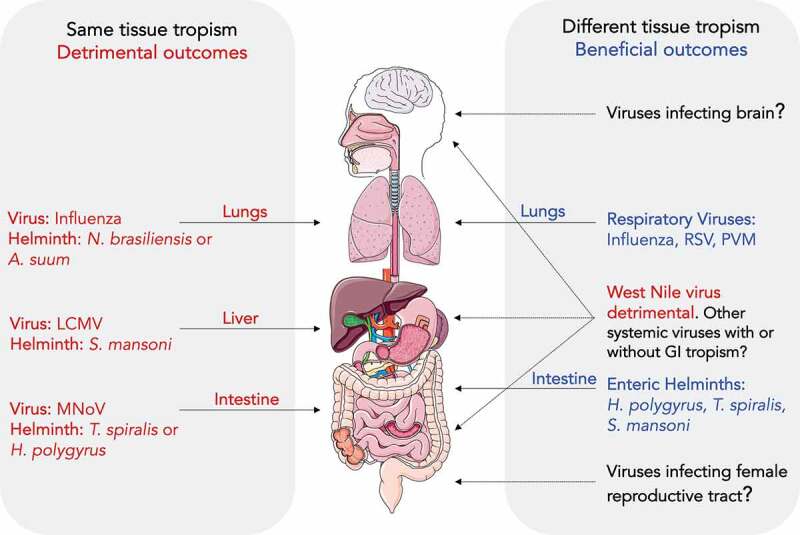Figure 1.

Tissue tropism of helminths and viruses can modulate coinfection outcome. (Left) Helminths and viruses that infect the same tissue can result in detrimental outcome for the host. For example, N. brasiliensis or A. suum and influenza infection of lungs; S. mansoni/LCMV infection of the liver; T. spiralis/MNoV or H. polygyrus/MNoV infection of the small intestine. (Right) Helminth and virus infection of different tissues can have beneficial effects. For example, helminths in their enteric phase such as H. polygyrus, T. spiralis and S. mansoni protect against respiratory viruses including influenza, RSV and PVM. However, H. polygyrus coinfection with WNV in the GI tract was detrimental to the host. The effect of enteric helminths on other systemic viruses that do not have tropism for the GI tract is unknown
